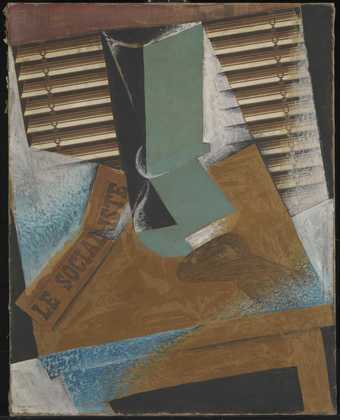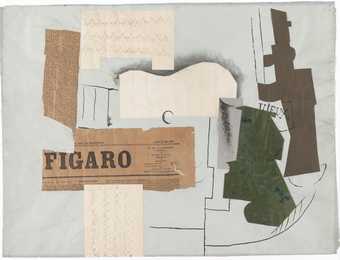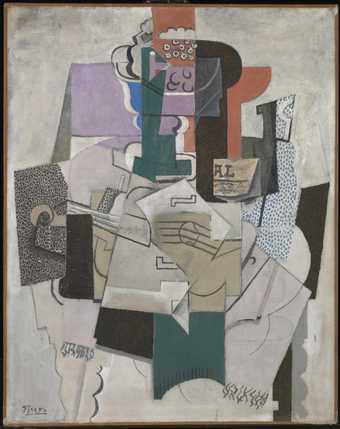
Juan Gris
The Sunblind
(1914)
Tate

Pablo Picasso
Bottle of Vieux Marc, Glass, Guitar and Newspaper
(1913)
Tate

Pablo Picasso
Bowl of Fruit, Violin and Bottle
(1914)
Lent by the National Gallery 1997
In an attempt to classify the revolutionary experiments made in cubism by Georges Braque, Pablo Picasso and Juan Gris, historians tend to divide cubism into two stages, analytical and synthetic.
Synthetic cubism began when the artists started adding textures and patterns to their paintings, experimenting with collage using newspaper print and patterned paper. Analytical cubism was about breaking down an object (like a bottle) viewpoint-by-viewpoint, into a fragmentary image; whereas synthetic cubism was about flattening out the image and sweeping away the last traces of allusion to three-dimensional space.
Picasso’s papier collés are a good example of synthetic cubism.
